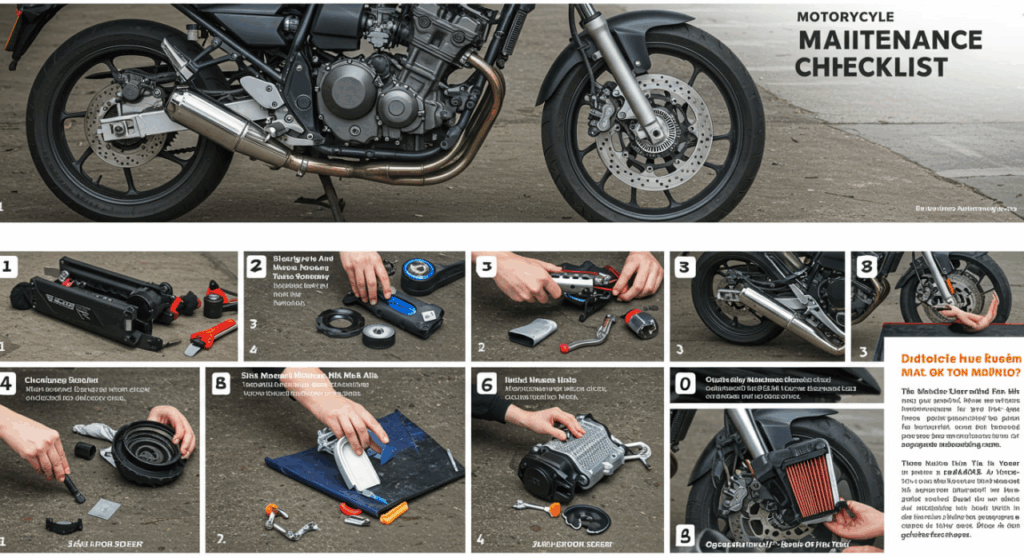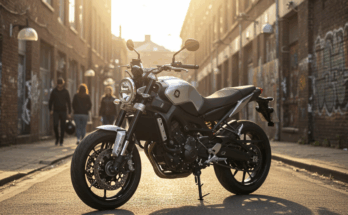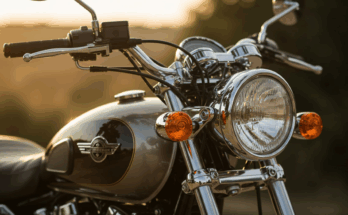Maintaining your motorcycle is more than just keeping it shiny for the open road—it’s about ensuring safety, performance, and longevity. A well-maintained bike not only rides smoother but also reduces the risk of breakdowns and costly repairs. By dedicating time each month to a thorough maintenance routine, you can catch small issues before they become big problems. This article provides a detailed, step-by-step motorcycle maintenance checklist tailored for monthly care, designed to keep your ride in top shape. Whether you’re a seasoned rider or a beginner, this guide will help you stay on top of your motorcycle’s needs with confidence.
Why Monthly Motorcycle Maintenance Matters
Regular maintenance is the backbone of a reliable motorcycle. Riding exposes your bike to constant wear from road conditions, weather, and mechanical stress. A monthly checklist ensures that critical components are inspected and serviced before minor wear turns into major damage. This routine not only enhances your bike’s performance but also boosts safety by reducing the likelihood of accidents caused by mechanical failure. Additionally, consistent care can extend the lifespan of your motorcycle, preserving its value and keeping it ready for every adventure. Think of it as a monthly health checkup for your two-wheeled companion.
Your Monthly Motorcycle Maintenance Checklist
This checklist is designed to be comprehensive yet manageable, covering the key areas of your motorcycle that need regular attention. Follow these steps each month to keep your bike in peak condition.
Check and Clean the Air Filter
The air filter is your engine’s first line of defense against dust, dirt, and debris. A clogged filter restricts airflow, reducing engine efficiency and fuel economy. Start by locating the air filter, typically found under the seat or side panels, and remove it according to your bike’s manual. Inspect it for dirt buildup—if it’s slightly dirty, tap it gently or use compressed air to clean it. For heavily soiled filters, replace them with a new one. A clean air filter ensures your engine breathes properly, delivering optimal power and efficiency.
Inspect and Adjust Tire Pressure
Tires are critical for safety and handling, and incorrect pressure can lead to poor performance or even accidents. Use a reliable tire pressure gauge to check both tires against the manufacturer’s recommended PSI, usually found in the owner’s manual or on a sticker near the swingarm. Adjust the pressure using a pump if needed, and don’t forget to check when the tires are cold for accurate readings. While inspecting, look for signs of wear, cracks, or punctures. Properly inflated tires improve grip, fuel efficiency, and overall ride quality.
Examine Brake Pads and Fluid Levels
Your brakes are your lifeline on the road, so monthly checks are non-negotiable. Start by visually inspecting the brake pads for wear—most pads have wear indicators, and if they’re worn below 2mm, it’s time for a replacement. Next, check the brake fluid level in the reservoir, typically located near the handlebars or under the side cover. Ensure the fluid is clear and within the marked levels; top up with the recommended fluid type if necessary. Faulty brakes can be catastrophic, so address any issues immediately.

Lubricate and Adjust the Chain
For chain-driven motorcycles, proper chain maintenance is crucial for smooth power delivery. Inspect the chain for dirt, rust, or excessive slack. Clean it with a chain cleaner or mild degreaser, then apply a high-quality chain lubricant evenly. Check the chain tension by measuring slack (usually 1-1.5 inches of play, depending on your bike’s specs). Adjust the tension using the rear axle adjusters if needed, ensuring the wheel remains aligned. A well-maintained chain reduces wear on sprockets and improves ride quality.
Check Fluid Levels (Oil, Coolant, and More)
Fluids keep your motorcycle running smoothly, so monthly checks are essential. Start with the engine oil—check the level using the dipstick or sight glass, and ensure it’s within the recommended range. If the oil looks dark or gritty, it’s time for a change. For liquid-cooled bikes, inspect the coolant level in the reservoir and top up with the correct coolant type if low. Also, check the hydraulic clutch fluid (if applicable) and ensure it’s clear and at the proper level. Maintaining proper fluid levels prevents overheating and internal damage.
Inspect Lights and Electrical Systems
Visibility is key to safe riding, so test all lights—headlights, taillights, brake lights, and turn signals. Replace any burnt-out bulbs immediately. Check the battery terminals for corrosion and ensure connections are tight. If your bike has been sitting for a while, use a multimeter to check the battery voltage (a healthy battery should read around 12.6V when off). Faulty lights or a weak battery can compromise safety, so address these issues promptly.
Examine Cables and Controls
Throttle, clutch, and brake cables are critical for precise control. Inspect them for fraying, kinks, or stiffness, and ensure they move smoothly. Lubricate cables with a dedicated cable lube to prevent sticking. Test the throttle for smooth operation and quick return to idle. Check handlebar controls, such as switches and levers, for proper function. Smooth cables and controls enhance rider confidence and ensure responsive handling.
Look for Loose Bolts and Fasteners
Vibration from riding can loosen bolts and fasteners over time. Use a wrench or socket set to check critical areas like the engine mounts, exhaust, and suspension components. Tighten any loose bolts to the manufacturer’s torque specifications. Pay special attention to the footpegs, handlebars, and axle nuts, as these are prone to loosening. A quick check can prevent parts from falling off or causing instability during rides.
Clean and Protect the Bike
A clean motorcycle isn’t just about aesthetics—it’s about spotting potential issues like leaks or cracks. Wash your bike with a mild soap and water, avoiding high-pressure hoses that can damage seals. Dry it thoroughly to prevent rust, and apply a wax or protectant to painted surfaces and chrome. Cleaning also gives you a chance to inspect the frame, swingarm, and other components for damage or wear. A well-kept bike stays in better condition and holds its value longer.
Additional Tips for Motorcycle Longevity
Beyond the monthly checklist, a few habits can further extend your bike’s life. Store it in a dry, covered area to protect it from weather damage. Use a quality motorcycle cover if outdoor storage is unavoidable. Avoid aggressive riding during cold starts to minimize engine wear. Finally, keep a maintenance log to track service dates and issues, which helps with resale value and ensures you stay on schedule.
Common Mistakes to Avoid
Even seasoned riders can overlook key maintenance steps. One common mistake is neglecting the chain, leading to premature sprocket wear or even chain failure. Another is ignoring tire pressure, which affects handling and tire lifespan. Don’t skip fluid checks—low oil or coolant can cause catastrophic engine damage. Finally, avoid using cheap or incorrect parts, as they can compromise performance and safety. Stick to manufacturer-recommended components for the best results.
FAQs About Motorcycle Maintenance
How often should I perform a full motorcycle maintenance check?
A full maintenance check, like the one outlined above, should be done monthly for regular riders. If you ride less frequently, every 1,000 miles or every two months is a good rule of thumb. Always consult your owner’s manual for model-specific intervals.
Can I use any chain lube for my motorcycle?
Not all chain lubes are equal. Use a lubricant designed specifically for motorcycle chains, preferably one that matches your bike’s chain type (e.g., O-ring or standard). Avoid over-lubricating, as excess lube can attract dirt and cause buildup.
What happens if I don’t maintain my motorcycle regularly?
Neglecting maintenance can lead to reduced performance, safety risks, and costly repairs. Issues like worn brake pads, low fluids, or a dirty air filter can cause accidents, engine damage, or breakdowns, leaving you stranded or worse.
Do I need special tools for monthly maintenance?
Basic tools like a tire pressure gauge, wrench set, screwdriver, and chain cleaner are sufficient for most tasks. A torque wrench is helpful for ensuring bolts are tightened correctly. Always refer to your bike’s manual for specific tool requirements.
How do I know when to replace my motorcycle’s battery?
A healthy battery typically reads 12.6V or higher when off. If it consistently reads below 12.4V or struggles to start the bike, it may need replacement. Most motorcycle batteries last 2-4 years with proper care.



